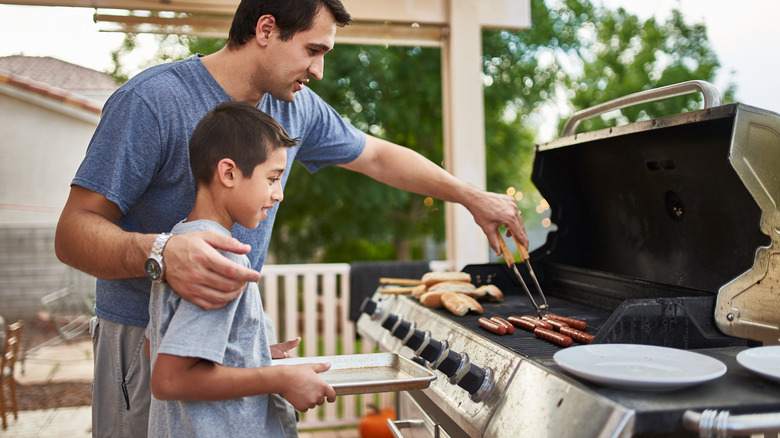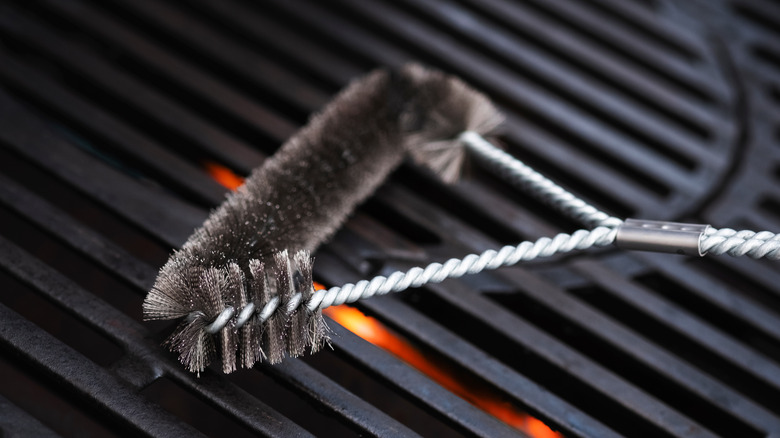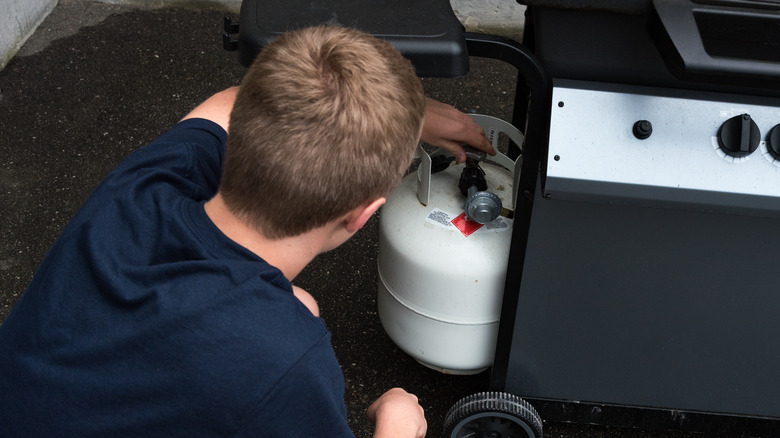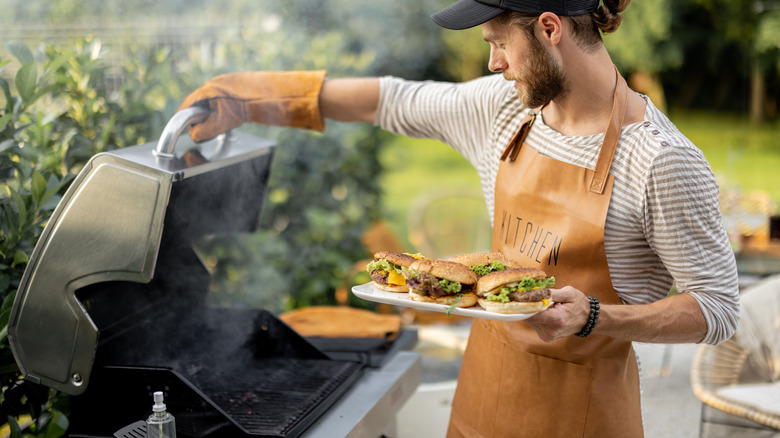3 Ideas For Keeping Your Grill Safe And Clean This Summer
The act of grilling can be traced all the way back to the 17th century, with a Caribbean and South American tribe known as the Arawak tribe, according to Bar S. The Arawak tribe was known for cooking with a method called Barbacoa, which was done by placing meat on sticks positioned over an open flame. Later, this style of cooking spread over to Spain, where they explored new ways to take this style of cooking to the next level. By 1897, the original grill design was created by Ellsworth B. A. Zwoyer, leading to the grills we commonly use today.
In modern society, a grill goes above and beyond a simple cooking appliance. According to CNN, around 75% of American households own their own grills, which makes grilling a popular pastime. Whether it's a holiday, special event that needs to be recognized, or just a nice day out on the patio, throwing food on the grill is a common way to bring people together and create a sense of community.
Despite all the fun a grill can lead to, however, Taste Of Home warns that handling a grill still needs to be done with extra precautions. When not handled properly, your grill can become a risk to the area around you, as well as to the food you cook with it. Ensuring you have a fun and safe time using your grill this summer, House Digest is here with three ways you can keep your grill safe and clean.
1. Clean the grill regularly
It's important to clean the grill on a regular basis, preferably after each use. When left unmaintained, residue from your previously-cooked food will begin to build up on the surface of your grill. BBQ Island explains that these pieces of residue will be burned and infused into your next meal when not cleaned off beforehand. Because these burned pieces of residue contain amino acids and other cancer-causing chemicals, this process could potentially contaminate all the food you cook on your grill.
When it comes to cleaning your grill, Food & Wine mentions that the type of grill you have will highly dictate your cleaning process. For example, gas grills need have their drip pan emptied, while charcoal grills need to have their ash cleared. Regardless of the specific grill you own, however, there are still a few basic maintenance steps you need to follow. First, right after you finish cooking, set your grill to its highest setting, and let all the crumbs and residue left on the surface of your grill caramelize. This should take about fifteen minutes. Then while the grill is still hot, use a grill brush to scrape off all the residue from the grates. Finally, finish off by wiping the grates down with a paper towel thoroughly soaked with canola oil. If the surface of your grill is still hot, you can complete this step by holding the paper towel with a pair of tongs.
2. Check the hose and propane tank
When you have a gas-powered grill, it's important that you always take a few extra minutes to check your grill for any gas leaks before using it. If a gas leak goes undetected it has the potential to cause damage to your grill, yourself, and your surroundings. After detecting a gas leak, it is crucial that you replace your grill's hose or propane tank, depending on where the leak is located, before safely using your grill again.
When checking for gas leaks, many grill owners make the mistake of turning on the gas and feeling along the hose and tank for physical leaks. This method, however, is not accurate or safe because most gas leaks are too small to physically detect, which will cause the danger that accompanies an undetected gas leak. Instead, Appliance Analysts suggests using the soap and water technique to locate leaks.
Start by filling container with water and adding soap. Then, take a paint brush and lather the solution onto your grill's hose and gas tank. After turning on the gas, you can easily identify if there are any gas leaks because the gas leaks will blow bubbles. While checking for gas leaks it is also important that you ensure the hose is properly attached to the propane tank. If anything happens to be wrong with your hose or tank, it is always recommended to replace them before using your grill again.
3. Check the location and stability of your grill
Where you decide to place your grill while cooking plays another very important role for your summer grill safety. First Alert claims that although it may seem obvious, you should only use your grill in a properly ventilated, completely outdoor environment. This means that an open garage or a covered porch are excluded from your grill cooking locations.
When looking for the perfect outdoor spot to set up your grill and start cooking, it's also important that the surface of whichever spot you choose is both flat and even. If you set up your grill on a hill or bumpy ground, your grill is more likely to tip over, which could potentially cause a fire or severe harm to others. It should also be a safe distance away from your home or any other structures due to the same potential fire hazard. For the safest results while using your grill, Homesite highly recommends positioning your grill at least 10 feet away from your home or any other structure on your property and always having a spray bottle with water and a fire extinguisher nearby, just in case.



